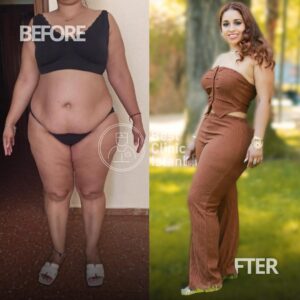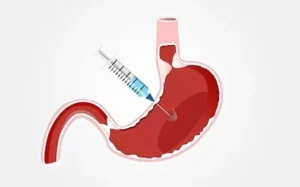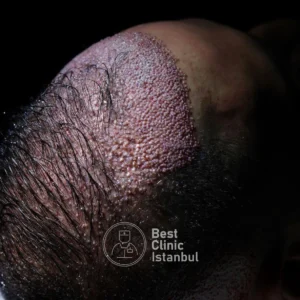
Breast Lift Scars
We use the best and latest Breast Lift techniques to guarantee you get the best results.
Breast Lift Scars After Surgery
Introduction
Breast lift scars are a natural concern for anyone considering a breast lift procedure. While a breast lift can dramatically improve the shape and position of the breasts, scarring is an inevitable part of the process. The good news is that there are many ways to reduce the appearance of scars over time. In this comprehensive guide, we’ll dive deep into what you can expect from breast lift scars, the different types of scars, and effective treatments to minimize them.
What Causes Breast Lift Scars?
When performing a breast lift (mastopexy), surgeons make incisions to lift and reshape the breast tissue. Depending on the technique used, these incisions can vary in size and location. The healing process naturally involves the formation of scar tissue, as the skin repairs itself after being cut.
Several factors can influence how your scars develop:
- Skin Type and Genetics: Some individuals are prone to more noticeable scarring, such as hypertrophic scars or keloids.
- Healing Process: Proper aftercare, including avoiding infections and keeping the wound clean, plays a big role in how your scars heal.
- Surgical Technique: Different techniques can lead to varying amounts of scarring, so it’s important to discuss your options with your surgeon.
Different Types of Breast Lift Scars
Your breast lift scars will depend on the type of incisions made during surgery. The three most common types of scars include:
- Periareolar Scar: This scar is located around the outer edge of the areola. It’s often used in cases where minimal breast lifting is required. This scar tends to blend in well with the natural skin color transition between the areola and the breast skin.
- Vertical (Lollipop) Scar: This incision goes around the areola and extends vertically down to the breast crease. It’s often referred to as the "lollipop" scar due to its shape. This is one of the most common incisions used for moderate breast lifts.
- Anchor Scar: In cases where a more significant lift is needed, surgeons may use an anchor-shaped incision. This includes a lollipop incision with an additional horizontal incision along the breast crease. While this method creates more scarring, it allows for more extensive reshaping.
Effective Methods to Minimize Breast Lift Scars
Though scars are a natural part of the healing process, there are numerous steps you can take to reduce their appearance:
1. Follow Your Surgeon’s Aftercare Instructions Carefully
Your surgeon will provide detailed aftercare instructions to ensure proper healing. This may include keeping the incisions clean and dry, wearing a compression bra, and avoiding any activities that can stretch or irritate the healing tissue.
2. Use Silicone Sheets or Silicone Gel
Silicone sheets and gels are some of the most effective treatments for reducing the appearance of scars. Silicone has been proven to flatten raised scars, soften them, and lighten their color. You can begin using these products after your incisions have fully healed.
3. Massage the Scar Tissue
Scar massage, once approved by your surgeon, can help to break down excess scar tissue and increase blood flow to the area. Gentle circular motions with your fingertips can reduce the firmness and thickness of the scar over time.
4. Keep Scars Out of the Sun
UV rays can cause scars to darken and become more prominent. Always protect your scars from the sun by covering them with clothing or applying a broad-spectrum sunscreen with SPF 30 or higher. Prolonged sun exposure during the healing phase may lead to permanent discoloration.
5. Consider Non-Surgical Treatments
For patients who are concerned about the appearance of their scars after they have fully healed, there are non-surgical treatment options available:
- Laser Therapy: Laser treatments can reduce the redness and appearance of scars by targeting the pigmentation in scar tissue. These treatments are particularly effective for fresh scars.
- Microneedling: This technique involves tiny needles that create micro-injuries in the scar tissue, promoting collagen production and smoother skin over time.
- Chemical Peels: Certain chemical peels can help to exfoliate the upper layers of skin and encourage faster scar fading.
6. Stay Hydrated and Eat a Nutrient-Rich Diet
Your body needs proper hydration and nutrients to heal well. Drink plenty of water and eat a balanced diet rich in vitamins and minerals. Foods high in Vitamin C, Vitamin E, and zinc can promote skin healing and reduce scarring.
When to Consider Scar Revision Surgery
If you’ve tried various scar treatments but are still unhappy with the appearance of your scars, you may be a candidate for scar revision surgery. This procedure involves removing the scar tissue and resuturing the area to create a less noticeable scar. Scar revision is generally recommended after your scars have had at least a year to heal fully.
How Long Does It Take for Breast Lift Scars to Fade?
The healing process varies for each individual. In the first few weeks after surgery, your scars will likely be red, raised, and firm. Over time, they will soften and lighten, typically fading significantly within 12-18 months. It’s important to be patient and consistent with your scar treatments during this time.
The Importance of Patience and Consistency
Scar healing requires patience. It can take many months before scars flatten out and become less noticeable. Stick to a regular routine of scar treatment, such as applying silicone gel or using sunscreen, for the best long-term results.
Do you have more questions about breast lift scars or the healing process? Contact us today to schedule a consultation and learn how we can help you achieve the best results from your breast lift surgery!
Frequently Asked Questions
Q: Are breast lift scars permanent?
A: While scars will fade over time, they are permanent. However, with proper care and treatment, they can become much less noticeable.
Q: Can breast lift scars be removed?
A: Scar revision surgery or treatments like laser therapy can significantly improve the appearance of scars, but it’s unlikely they will be completely removed.
Q: How soon can I start using scar treatments after a breast lift?
A: Most surgeons recommend waiting until the incisions are fully healed, usually around 2-4 weeks post-surgery, before starting any scar treatments.












